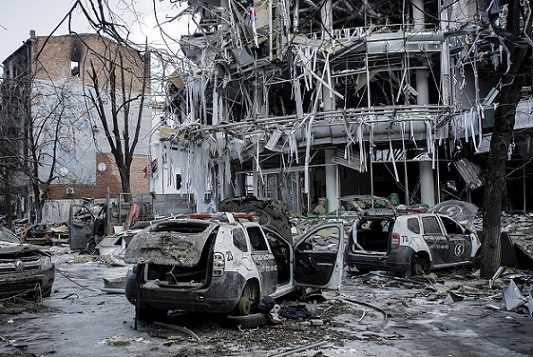The second quarter will perhaps be that of the outcome, after the first three months of the year strongly affected by the Russian military offensive in Ukraine. Since, ” the price of raw materials has risen by 25% on average “and the conflict” fueled already high inflation in recent weeks “Explained this Wednesday as part of a conference Alexandre Baradez, head of market analysis at IG France.
Even if the war is not solely responsible for these flights, “ the average price of raw materials has tripled since the trough linked to the first wave of Covid in the first half of 2020 “, comments the analyst once again, she “ catalyzed the trend “. Looking more closely at the latest US inflation figures, and more specifically the month-to-month change, ” we note that energy contributed two-thirds to this increase, which reflects the importance of the geopolitical shock on the evolution of prices “.
Pressure on central banks
This situation further increases the pressure on central banks, which were already facing “ dynamic pre-war price growth in Ukraine, driven by strong demand and ongoing global logistical challenges “. ” Medium-term inflation expectations (…) continue to tighten both in Europe and the United States, with five-year inflation swaps at 2.40% and 2.85% respectively, well above the 2% target of the two central banks. .
The Fed and the ECB therefore have little room for manoeuvre, further reduced by the new confinements in China and their direct impact on logistics and supply chains. Already sailing by sight, they will not be able to be too aggressive because they risk accentuating ” the impact on household confidence and pushing economies into recession », the reversal of certain sentiment indicators making « pose the threat of demand destruction “.
Hope for a ceasefire
Curb the price trend observed before the conflict and the new Chinese confinements, without overreacting to recent events: the task promises to be complex.
Yet central banks could be helped by an easing of geopolitical tensions. ” If a ceasefire occurs in Ukraine in the coming weeks, a fairly pronounced reflux should occur on raw materials “, thus facilitating the measures that central banks must put in place on the monetary level, while also reducing inflationary pressures.
Another catalyst for a calming of the markets: the deconfinements in China. ” Covid waves not being eternal “, the end of the restrictions would allow” again to relax rates due to better visibility on logistics flows and therefore on prices “.
